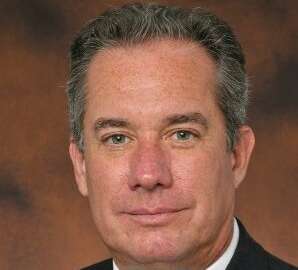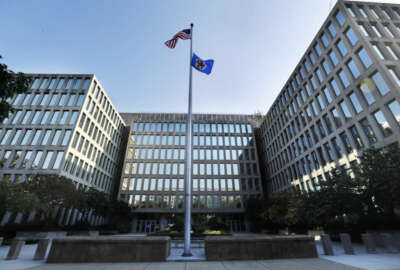
More career senior executives earned higher-value performance bonuses in 2016
More than 81 percent of career members of the Senior Executive Service earned an award in 2016, compared to about 71 percent in fiscal 2015.
More career senior executives received a performance award in fiscal 2016 compared to the previous year, according to the latest report on Senior Executive Service pay and appraisals from the Office of Personnel Management.
More than 81 percent of career members of the SES earned an award in 2016, compared to about 71 percent in fiscal 2015.
The awards themselves were more in 2016 than they have been in recent years. On average, a career executive earned a bonus of $11,928 — $3,667 more than the previous year’s average performance award across government.
The increase is, in part, due to the direction agencies took after OPM and the Office of Management and Budget authorized organizations to raise their limits on SES bonus spending by nearly 3 percent. That decision stems back to a December 2015 executive order from former President Barack Obama, which raised the caps on SES performance bonuses and cited ongoing challenges in recruiting and retaining the next generation of senior executives.
“Although federal agencies continue to operate within budgetary constraints, this year’s report indicates that agencies made greater distinctions in SES performance, pay and awards than in the previous year,” OPM wrote. “This was due in part to an increase in the budgetary awards limitation for SES awards — from 4.8 percent to 7.5 percent of aggregate career SES salaries.”
On average, performance awards made up 6.4 percent of aggregate salaries for career executives in 2016, compared to 4.5 percent during the previous year.
Bonuses for career SES are tied to their performance ratings during a given year: the higher the rating, the higher the award.
Slightly more than half of all senior executives received the highest possible possible performance rating in fiscal 2016.
Specifically, 51.7 percent of career executives — which made up a 91 percent majority of the total SES population — received an “outstanding” rating in fiscal 2016, compared to 48.9 percent of SES during the previous year.
About 52 percent of all senior executives received a performance rating of “outstanding” in fiscal 2016, a 2.4 percent bump over the previous year.
| Agencies with Most Career SES Earning an Award | ||||||||
| Percentage of SES | Average Award | Change in Average Award (2015-2016) | ||||||
| OPM | 100 percent | $13,999 | + $5,268 | |||||
| Small Business Administration | 97.1 percent | $13,236 | + $4,693 | |||||
| Agriculture | 93.4 percent | $12,686 | + $4,080 | |||||
| Nuclear Regulatory Commission | 93.1 percent | $12,481 | + $4,398 | |||||
| Health and Human Services Department | 92.8 percent | $13,123 | + $4,914 | |||||
OPM by far saw the highest number of its senior executives earn performance bonuses in 2016. All of its 38 career SES members earned a bonus last year, though nearly 40 percent of them received the highest possible performance rating.
Senior executives at the State Department also experienced significant changes in 2016, though in the opposite direction. Nearly 39 percent fewer career State executives received the highest possible performance rating last year compared to 2015.
But the department did, however, hand out more performance bonuses to State executives. About 34 percent more of the SES cadre at State got a bonus in 2016 compared to the previous year.
The picture is also different at the Veterans Affairs Department. Fewer career SES earned bonuses in 2016, and those awards were about $1,771 less those from the previous year.
| Agencies with Fewest Career SES Earning an Award | ||||||||
| Percentage of SES | Average Award | Change in Average Award (2015-2016) | ||||||
| Office of Management and Budget | 50.8 percent | $6,309 | + $809 | |||||
| Social Security Administration | 54.4 percent | $7,458 | – $1,374 | |||||
| NASA | 56.8 percent | $6,886 | – $77 | |||||
| VA | 60.1 percent | $6,386 | – $1,771 | |||||
| U.S. Agency for International Development | 72.2 percent | $14,396 | + $6,006 | |||||
The Senior Executive Service has gained more attention in recent years, as members of Congress have taken a hard look at SES bonuses.
And though the Trump administration has said in its most recent budget proposal that it too will review and consider more changes to the current policies that govern the SES, it didn’t describe many specifics.
The administration, however, gave a more concrete direction for federal employee performance more broadly in its 2019 budget proposal. In it, the administration reiterated its belief in pay for performance and suggested the creation of a $50 million central fund that would pay for innovation ideas to help meet recruitment, retention and reskilling challenges across government.
Agencies have also struggled to attract the next cadre of rising executives. Though OPM’s latest survey of departing senior executives between August 2015 and July 2016 painted a slightly better picture than the previous year’s results, it described an SES corps in need of a morale boost.
Meanwhile, up and coming federal leaders have mixed views of their first experiences joining the SES, according to OPM’s most recent survey of more than 800 newly appointed senior executives during fiscal 2016.
About half of new SES members said they were satisfied with the overall onboarding process, while 24 percent said they were dissatisfied or very dissatisfied with the program in general. A larger group of new executives, however, said they had a neutral opinion of their onboarding experiences.
“Agencies should develop programs in a manner most appropriate for each agency’s mission, resources and determination of individual executive developmental needs,” OPM said. “Agencies should support new executives through multiple and diverse mechanisms. To help new executives reach their full performance as quickly as possible, agencies should provide various learning options to reinforce messages.”
About 22 percent of new executives said they went through a Senior Executive Service Candidate Development Program before taking on their new SES appointments. Most of the executives said they enjoyed it; about 77 percent of executives who participated in a developmental program said it helped prepare them for an appointment in the SES.
And according to the OPM, there’s a high value in getting the SES onboarding process right.
“Research shows that the effective onboarding of executives minimizes the need for terminations and costly replacements by helping newly placed executives navigate the areas most critical to their success,” OPM wrote.
Current hiring challenges mean agencies can’t simply let their new executives “sink or swim,” OPM said. Instead, the best agencies actively choose to invest time and resources to help put their executives a position to succeed.
Generally, new executives said they wanted more information and a more active flow of communication about the SES onboarding process. More than one-third of SES members, or 37 percent, said they received no information about required training or applications, benefits or other subsidies before their first day on the new job.
Few senior executives said their supervisors offered them a coach to help them through their first year. Just 18 percent of SES received a coaching offer, but a large majority of those who used an executive coach through the first year of their new job — 86 percent — found the experience to be valuable.
Copyright © 2024 Federal News Network. All rights reserved. This website is not intended for users located within the European Economic Area.
Nicole Ogrysko is a reporter for Federal News Network focusing on the federal workforce and federal pay and benefits.
Follow @nogryskoWFED






